Zittau
In the darkness of a February evening I leave my hotel in Zittau and go looking for a restaurant. The streets are deserted. Only from a few windows shines a bit of light. The street lights are also rather bland. I discover a small restaurant in a courtyard, but it is full and they direct me to the market square.
As I leave the courtyard in this direction, distant screaming echoes through the empty streets. It gets louder the closer I get to the classicist town hall with its illuminated, Italian-style campanile. Today is Rose Monday and I'm thinking of a carnival event. But it has nothing to do with fun. A few demonstrators have gathered at the market. A Monday demonstration against the increasing acceptance of the right-wing radical AfD party. The speakers talk about communication and tolerance. A crowd of at maximum a hundred listeners are surrounded by what appears to be an equally large contingent of police. A few provocative disruptors try to break through the protective ring the law enforcement has established. It's more of a cat and mouse game. They run towards the demonstraters and when a police officer runs in their direction they run away.
The atmosphere is tense. Maybe that's why the streets are so empty. At the back of the town hall, a brass band plays church music. There have no listeners. I retreat to the neighboring square, which is simply called Neustadt. The restaurant “zum alten Sack”, which would actually have suited me better, is closed. A little further the golden star is open.
While I order my food, the guests at the table next to me are talking about the “hopeless situation”. In the restaurant here you can still clearly distinguish the Wessi (inhabitant of the former FRG) from the Ossi (inhabitant of the former GDR). Ossi still hangs his jacket on a clothes rack with confidence. From bakc home a Wessi is used to his jacket or at least its contents is being stolen and therefore prefers to keep his assets with him. This type of crime was virtually unknown in the communist GDR before reunification.
Arrival in Oybin station
Zittau has an eventful history full of disasters and wars. The city in the border area between Bohemia and Brandenburg's Upper Lusatia was on an important trade route that connected Prague with the Baltic Sea region. Since this involved constant changes of ownership between the various noble rulers, the Six Towns League was founded in 1346 together with the cities of Lauban, Bautzen, Görlitz, Löbau and Kamenz. The city had become prosperous through cloth production, trade and beer brewing and was therefore called “the rich”. During this time the city belonged to Bohemia under Emperor Charles IV. Charles promoted the city and fortified the pass of the trade route over the Zittau Mountains with the castles of Oybin and Karlsfried.
The sandstone rock with the Oybin monastery and castle
The Zittau Mountains rise south of Zittau. The jumble of sandstone cliffs, up to 792 m high, is the smallest mountain range in Germany. Numerous wildly romantic rock formations ensured that the area was visited by tourists from an early age. In the 14th century emperor Charles IV was probably the first. The former robbers hideout Oybin was not only supposed to secure the trade route from Prague to the Baltic Sea, but he also had it expanded into a retirement home for himself. The complex occupies the entire area of the plateau of a 500 m high sandstone cliff.
From the small and now, in winter, deserted spa resort of Oybin, you climb stairs through the Ritterschlucht to the gate that forms the entrance to the castle. Due to the steep cliffs of the table mountain, no other access is possible. Attackers had to overcome three gates if they wanted to get inside the castle. The top two are preserved. When I arrive at the ticket counter, it turns out that a castle tour is starting in a few minutes. Despite the biting cold, a small group follows the enthusiastic guide undauntedly for more than two hours. What is strikingis how calm and well-behaved many of the children here are. They endure the long tour without complaint.
Charles IV had not only built the castle and palace up here. He also brought monks of the Order of the Cölestines with him from Prague. Construction began immediately on a monastery for the monks, including a Gothic cathedral. Artisans who were also responsible for the construction of St. Vitus Cathedral in Prague played a key role in the construction. The southern wall of the cathedral was carved from the Oybin sandstone rock. On the north side there was a two-story cloister and a library. The monks who lived here were artists renowned throughout the empire in writing and copying scripts, calligraphy and bookbinding.
The ruins of the monastery's cathedral
Karl himself never lived in his retirement home. At the beginning of the Reformation, the Hussites, the followers of the Bohemian reformer Jan Hus, sparked an uprising after their idols death at the stake that terrified Bohemia in particular for many years. During these Hussite Wars, the Prague Cathedral treasure was temporarily stored here. The castle served its purpose and withstood all attacks.
But the Reformation prevailed. The monastery was dissolved. In 1560 the library and church treasures were brought back to Prague. When lightning struck in 1577 and caused a fire the castle probably already was no longer inhabited. However, there must have been a powder magazine that blew up along with part of the building due to the fire. Further destruction occurred when the north wall of the monastery library fell into the depths after a rock fall.
After that, the castle was abandoned and was used as a quarry for construction work by the residents of the area. In the 18th century the area was discovered by Romantic artists. Hikes in the Riesengebirge became popular. Painters such as Johann Alexander Thiele, Adrian Zingg, Johann Philipp, Veith Carl Gustav Carus, Ernst Ferdinand Oehme, Carl Blechen and Adrian Ludwig Richter used the Oybin as a motif. Its most famous representative was Caspar David Friedrich, who stopped here in 1810 on a hike through the mountains. In many exhibitions on the occasion of his 250th birthday this year, his long-forgotten depictions have attracted new attention.
Researchers also took on Oybin. A museum for the finds was founded as early as 1879. Today the labyrinth of catacombs beneath the castle's former palace forms an adventurous museum location.
Tree in jumble of rocks of the Oybin
Many of the castle's treasures were hidden from these visitors' eyes for a long time. A meter-thick layer of rubble and earth covered the ground. It was not until 1992 that clean-up work and excavations began. Since there were no springs on the rock, all rainwater had to be collected in cisterns. During the excavations, not only the cisterns were uncovered, but also the water pipes that brought the water there from the roofs.
A little girl throws a stone into one of the cisterns and watches in delight as the circles of waves spread from the impact across the black water covered by plant remains. The mother reprimands the little one: “If everyone did that, this well would probably be full at some point.” I support the child because I would like to do it myself...
The path around the hacked-out cathedral
After the water entered the church through the porous sandstone of the church wall, which was hacked out of the stone on one side, the rock outside the wall was also broken away. Today this results in an adventurous tour around the rocky plateau, from which you have excellent views of the surrounding mountains and the valley with the narrow-gauge railway that takes visitors to Oybin. The path requires narrow passages through cracks in the sandstone and leads past stunted trees that have clung as if with claws into barely visible cracks in the rock.
One of the few flat areas on the site is a cemetery. It is still used by the Oybin community. The older graves use the grottoes and depressions in the sandstone rock. I spot the weathered statue of a knight's grave, carved from the rock, dating from 1550. Many of the graves are more than a hundred years old and are often surrounded by rusty, wrought iron railings.
The cemetery on the Oybin with the grave of the knight Peter von Debschitz from 1550
In the background are the ruins of the cathedral and the closed castle restaurant
\At the cemetery there is a restaurant that looks as if it already was here 200 years ago in Friedrich's time. It is closed for renovation. I retreat into a crevice in the rock to warm myself up with tea from my thermos flask, somewhat protected from the biting wind, and eat the picnic I brought with me.
Part of Prague's cathedral treasure was also stored in the well-fortified town of Zittau itself. The walls had to withstand the onslaught of the Hussites several times in the wars between 1424 and 1434. Due to the civil war in Prague and the storage of the cathedral treasure, the Franciscan monastery in Zittau became the center of the Catholic faith in Bohemia. It is now a fascinating museum about the city's history.
Vault in the Franciscan monastery
In the 16th century the Reformation slowly took hold. It was the custom in Catholic churches to cover the altar with a so-called FJastentuch during Lent before Easter. Despite the Reformation, this custom was retained in Saxony. One of the Lenten cloths was moved from Dresden during World War II so that it was saved from burning in the firestorm of the 1945 bombing. It was discovered in Oybin by Russian soldiers who cut it into pieces and used it as a cover for their sauna. What seems like a misfortune was a stroke of luck: if it had been discovered by one of the many art connoisseurs among the Russian officers, it would probably now be in a depot somewhere in Moscow or St. Petersburg or in an oligarch's safe. As it was, the pieces were recovered and stored behind a shelf in the library of the Franciscan monastery in Zittau. It was only after 1989 that the cloth was rediscovered and restored. It is now on display in the Church of the Holy Cross. It is said to be the second largest woven work of art in the world after the Bayeux Tapestry.
The church of the Franciscan monastery
The church is unique in itself . Its hall is supported by a single central pillar. Cannonballs in the wall are a reminder of the shelling by the Austrians. And the building is surrounded by an atmospheric cemetery where rusty railings protect gravestones overgrown with moss and ivy.
Cemetery and Church of the Holy Cross, storage location of the Fastentuchs
During the 30 Years' War, Zittau became part of Saxony. A new period of glory began after the end of the war. New buildings were constantly needed anyway because the city was regularly hit by fires, which each time devastated a large part of the city center. The new buildings built in the Dresden Baroque style demonstrated the wealth of the city.
Then Zittau was occupied by Prussian troops during the 7 Year War. The Austrians then bombed the strategically important city. Three quarters of all buildings were destroyed and over 800 citizens died. It was the end of “Zittau, the rich”.
It took many decades until the destroyed parts of the city center were rebuilt. The city wall gave way to green parks. The Johannis Church was rebuilt according to plans by the famous Prussian architect Schinkel. A classicist town hall was built on the market, which could also adorn a city in Northern Italy. Zittau transformed into an industrial city.
Connecting the city to the Saxon railway network to the west in 1848 made a significant contribution to this development. An expansion to the south was finally carried out after initially being prevented by the k. u.k. Austro-Hungarian government. In 1859 a railway line to Liberec in Bohemia was opened. For this purpose, an impressive viaduct was built over the Neisse. At a length of 745 m, this bridge with 39 arches spans the Neisse Valley. It is one of the oldest and still longest stone railway bridges in Germany.
Due to the lowering of the groundwater caused by the neighboring Polish open-cast lignite mine in Turów, the viaduct sank evenly by eight centimeters over its entire length between 1990 and 2002. It must therefore be constantly monitored. Nevertheless, the bridge can be passed at a speed of 90 km/h. It speaks for the quality of the builders back then that a bridge that was designed for much lighter trains still meets modern requirements today, while comparable modern bridges are often dilapidated after just a few decades.
With the expansion of the railway network, Zittau also received a modern train station in 1859. This building is still standing and has been renovated. Unfortunately, Deutsche Bahn is not able to market the beautiful building accordingly. Although the rail connections to Zittau and the bus and narrow-gauge station in front of the train station are well used, they have not even managed to attract permanent tenants to a kiosk or snack stand in the station.
Hauptbahnhof Zittau. The narrow gauge line leaves from the square in front of the station
In order to connect more remote areas, additionally narrow-gauge railways were built in Saxony. As early as 1884, one of these railways was built from Zittau to Hermsdorf in the east, In 1890 another railway was built towards the Zittau Mountains, the towns of Oybin and Jonsdorf.
More information about the narrow gauge railway and the other railways around Zittau can be found here:
The ruins of the former Phänomen company, later VEB Robur
Behind the train station, on the way into the city, lie the ruins of a large abandoned industrial area. With industrialization, Zittau became, in addition to the still flourishing textile industry, also the headquarters of the Phänomen Bicycle Works. Thep company later also manufactured motorcycles, cars and commercial vehicles. In addition to the coal open pit mining, there were also metal processing factories. Due to the border location - after all, the Imperial German Empire had waged war against the Emperor of Austria in 1866 - it was seen as necessary to create a barracks district in 1869. A use is still being sought for these buildings today.
There are a lot of industrial ruins in the area surrounding the city of Zittau. There was an open-pit coal mining area near the Zittau Vorstadt train station, of which Lake Olbersdorf bears witness today. If the reunification of Germany hadn't come just in time in 1989, this mining would probably have meant the end of the railway, as they wanted to expand the open-pit mining to the west to where the railway line runs. After reunification, the uneconomic mining in this area was stopped. Another abandoned industrial plant is at the Olberndorf-Niederdorf train station.
In 1933, Zittau shared the fate of the rest of Germany. When Hitler came to power, dissidents were defamed, dismissed, terrorized, imprisoned, dispossessed, disenfranchised and often killed. The city's cultural history museum in the former Franciscan monastery is showing a fascinating exhibition on the 90th anniversary of these events. The steps taken by the Nazis to monopolize their power in the city are meticulously documented. The fate of selected victims and perpetrators is presented biographically.
In light of the re-emergence of right-wing extremism in Germany and the protest events organized against it, this temporary exhibition is highly politically topical and explosive. Although it is designed more like a documentary and hardly shows any valuables, the room is strictly monitored. While I am studying the many texts, a family with children walks through the room. “We’re just going through here quickly,” they say to the guard. However, they make a mistake. It is extremely instructive to see how quickly a determined, democratically elected group of extremists can succeed in creating a brutal dictatorship.
The exhibition follows the events in Zittau in steps from February 1, 1933 to January 31, 1934. The Reichstag election on July 31, 1932 did not result in any clear majorities. In a subsequent election in September, the NSDAP even lost 4.2%. But all attempts to form a government failed. Nevertheless, on January 30, 1933, Hitler was appointed Chancellor by Reichspresident Hindenburg. The fire in the Reichstag, staged on February 28, 1933, became the reason for an ordinance to suspend large parts of the constitution of the Weimar Republic. Also in Zittau a wave of arrests took place on March 1, 1933, which was intended to exclude dissidents from the new Reichstag election on March 5. As a result, the NSDAP was able to improve its result to 43.9%, while in particular SPD and KPD lost votes.
On March 8th, a book burning took place in Zittau Neustadt, during which the black, red and gold flag of the Weimar Republic was symbolically burnedas well. Instead, on March 12, 1933, the imperial German flag in black, white and red and the swastika flag were hoisted. This intended to increase the nationalism of the population. On March 8, 1933, an SA Obergruppenführer came to power in Saxony on the basis of the “Ordinance for the Protection of the Reich and the State”. He not only replaced the ministers with NSDAP members, but also appointed auxiliary police officers from the ranks of the SA. On the same day there were arbitrary measures such as a raid on the left-wing Volks-bookstore. The bookstore, like other buildings, was then converted into an SA prison, as there was not enough space in the normal prisons for all those who had been taken under “protective custody”.
To celebrate the victory in the March 5 elections, rallies and torchlight parades were held afterwards. In a cloak and dagger operation, Friedrich-Ebert Strasse was renamed Adolf-Hitler Strasse on March 10th. The KPD was banned at the end of February 1933, followed by the SPD in June. From March 26th, in Zittau the first camp as a precursor to the concentration camps was set up in Hainewalde Castle. The political prisoners had to move there. These camps were initially intended for re-education with the help of political training evenings, physical work, singing Nazi songs and reading Hitler's “Mein Kampf”. The detainees were exposed to the arbitrariness and harassment of the guards. One prisoner had to clean the camp commandant's toilet every day with his toothbrush.
On March 29, all Jewish shops in Zittau were closed "due to concerns of public safety". Apartments of suspects and Jews and even allotments were searched and, of course, weapons and incriminating material were found. This gave reason to take more unwanted people into protective custody
From April 7th, the law for the “restoration of the professional civil service” came into force, with which politically dissident or Jewish civil servants were removed from their positions. The city councils were reconstituted in April, and in Zittau, in addition to the NSDAP with a majority of 13 seats, several other parties were represented with 12 seats, such as the SPD with 5 seats. However, the SPD could no longer fulfill this role because it was banned before the first meeting of the city council even took place. Their seats were then given to NSDAP members. The other parties such as the Zentrum dissolved themselves within a few weeks so that in the end only the NSDAP remained in the city council.
Neustadt
On May 26, the confiscation of assets of imprisoned opponents of the regime was legalized. Banks had to transfer balances from the accounts of now illegal organizations to state coffers.
The money was urgently needed. The party wanted to make itself popular by reducing unemployment and the construction program that was launched herefore consumed large amounts of money. Among other things, the Volksbad Großschönau and the Grenzlandtheater were built in Zittau, both of which still exist today.
In August, the protective custody camps were dissolved and replaced by a network of concentration camps. But also some reeducated prisoners were released. They had to pay a contribution of 1.50 RM per day of their detention and report to the police. The exhibition tells of prisoners who were so emotionally broken after imprisonment that they attempted suicide.
In order to gain further approval from the people, festivals were organized. The date for the celebration of “1000 Years of Zittau” was fictitious. A few months later there was also a Reichhandwerks (crafts) Week. On November 13th, Hitler organised another Reichstag election, which was linked to a vote to withdraw from the League of Nations. The only list you could choose from was the one of the NSDAP; there was no box for “no” votes. You had to explicitly write “no” on the ballot paper. Nevertheless, this was still done by almost 900 brave Zittau residents.
On January 30, 1934, the first anniversary of the seizure of power was celebrated. Within a year, the above measures had retrained, suppressed or driven the opposition into exile abroad. The democracy of the Weimar Republic was dead.
Grave monument on the Frauenkirchen Friedhof
In 1945 the revenge came. At the beginning of May the Red Army was about to cross the Neisse. The Zittau railway viaduct and the neighboring Neiße viaduct in Görlitz were prepared for blowing to pieces by the Wehrmacht on May 7, 1945 in order to stop the enemy from advancing further. Dietrich Scholze was the platoon leader of the railway pioneers who risked his life by preventing the viaduct from being blown up. He had the ignition cables and detonators installed by his unit removed and thrown into the Lusatian Neisse. The viaduct in Görlitz, which was comparable in size, was blown up.
Graves of soldiers at the Frauenkirchenfriedhof
Russian graves on the Frauenkirchenfriedhof

Mass graves for various nationalities on the Frauenkirchenfriedhof
The cemetery of the Frauenkirche in Zittau is actually more of a large city park. It is the city's oldest cemetery with an epitaph from 1627 and gatehouses from the 17th century. The redcent wars are represented in a variety of divisions. There are war graves from World Wars I and II, mass graves and Russian war graves. A variety of nations are represented in the mass graves. The victims are probably among the ranks of forced laborers who had to toil in various camps around Zittau. The Italian government recently has even erected a modern memorial stone. Among the Russian graves, stones with the inscription Неизвестный солдат (unknown soldier) predominate. Even I can decipher it even though I don't know a word of Russian...
After World War II, Zittau suddenly had a border to two states. While there was still a border with Czechoslovakia to the south and west, after the Second World War the Neisse suddenly became the border with Poland. In contrast to the West, the borders in the Warsaw Pact were by no means permeable. It was only after many years that there was relief in border traffic with Poland and Czechoslovakia, which was immediately reversed at the time of the Prague Spring.
Today the train travels via the Neisse viaduct to Poland. But he doesn't stop there. It passes only a few kilometers to the Polish border with the Czech Republic. The next stop is there in Hradec nad Nisou. Conversely, the German train to Seifhennersdorf passes through the Czech Republic without stopping there. And the train to Görlitz crosses the German-Polish border several times without stopping there. When he actually runs. In the town of Zittau proper, Poland is on the other side of the river. And if you walk a few minutes south from the Zittau Süd train station on the narrow-gauge railway, you will find yourself in the Czech Republic.
The historic water tower at the train station is still responsible for Zittau's water supply
After 1945, the city was ata a dead end due to its remote location. Added to this was the lack of investment during the GDR era. Hardly any modernizations were carried out or new buildings were built. The vehicle manufacturer Phänomen became the state-owned enterprise (VEB) Robur-Werke, but production was hampered by parts shortages and faulty machinery.
However, the lack of modernization has preserved the city's flair. There are hardly any buildings in the old town that were built after 1850. Many of the rooms on the ground floor still have medieval vaulted ceilings. Entrance portals in the Biedermeier style and historic shop fronts, which in the West often had to give way to modernisation, adorn the cobbled streets.
After reunification, like the Robur works, many of the other industrial plants were closed due to obsolescence and lack of profitability. Since the city is struggling with population decline. As a result, there is a lack of money for the renovation of historical buildings. There is a lack of tenants for the living space that has been renovated. In the last 30 years, 60 historic buildings in the old town have been demolished. In many cases the facades have been renovated but the windows on the floors above remain dark in the evenings.
Church of the Franziskanerklosters
The street to the train station is lined with pharmacies, hair salons, nail salons, hearing aid and orthopedic shops. It appears like there is a flaw somewhere in the design of the human race. But the population here is aging. There are also not enough workers. The proximity of the border has an advantage here: the majority of the restaurants are run by Poles and Czechs. The nursing staff for the elderly also come from there.
History repeats itself. In the last city council election, the right-wing extremist AfD received 23.7% of the vote, making it the strongest force in the city council. This also has to do with the fragmentation of the other parties in the Council. 36% of the votes are distributed among three different free voter alliances (Free Citizens of Zittau, Free Independent Voters and “Zittau can do more e. V.”). The latter also provide the mayor.
For the moment….
Sources:
Zittau 33, "Machergreifung" in der südlichen Oberlausitz, Ausstellungskatalog, Zittau 2023
W. Meereis, Besuch bei den sächsischen Schmalspurbahnen", EK Verlag, Solingen 1972




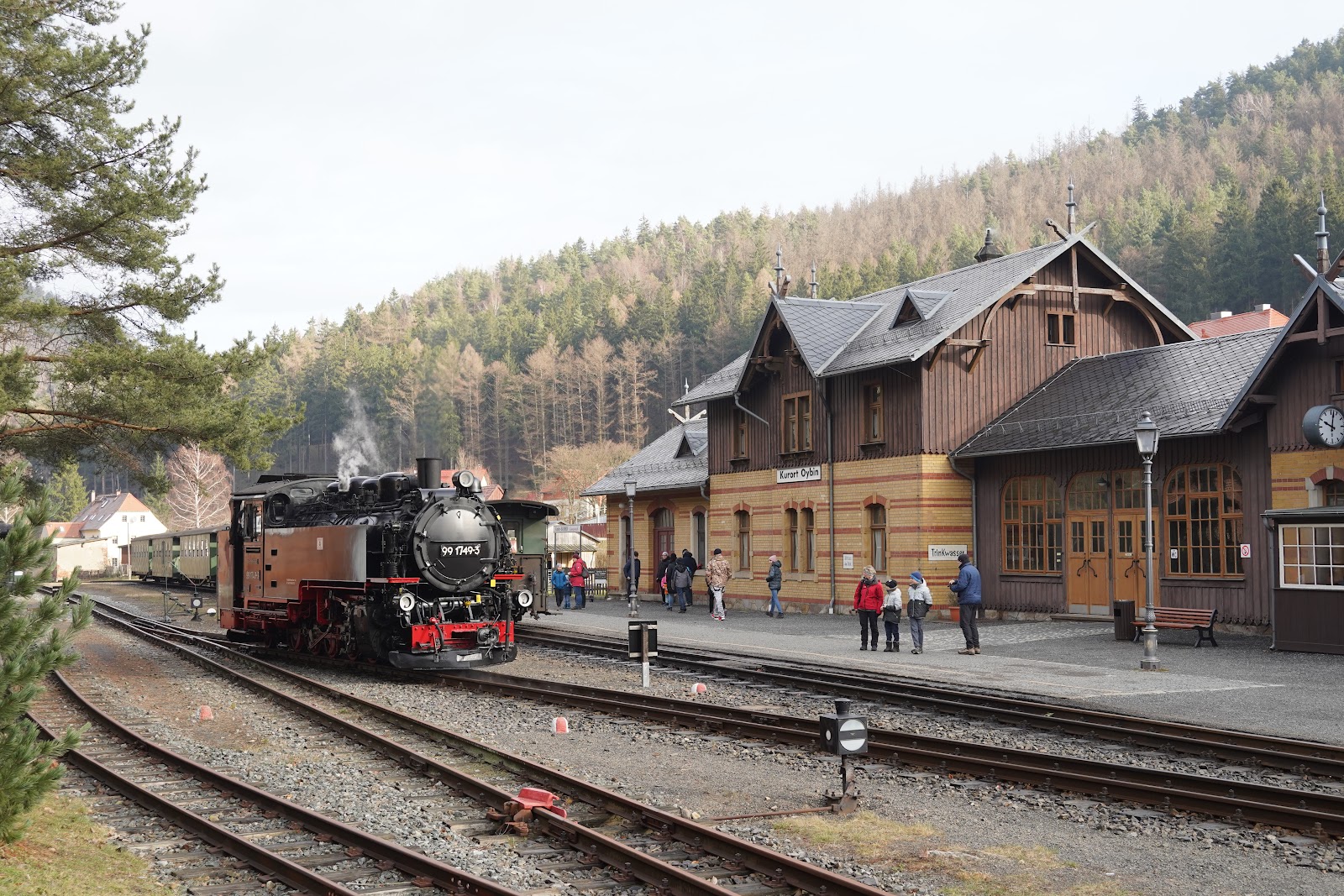





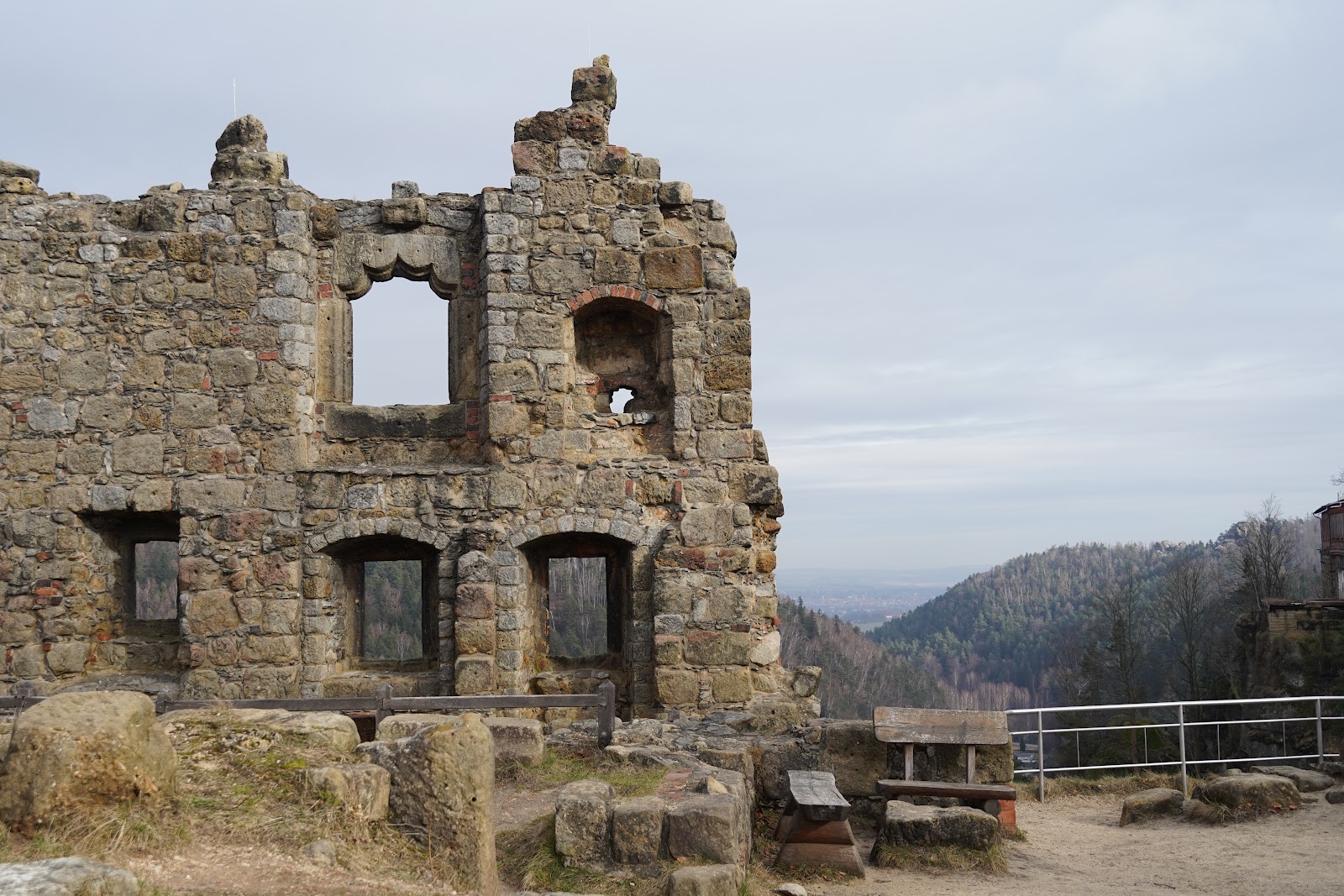
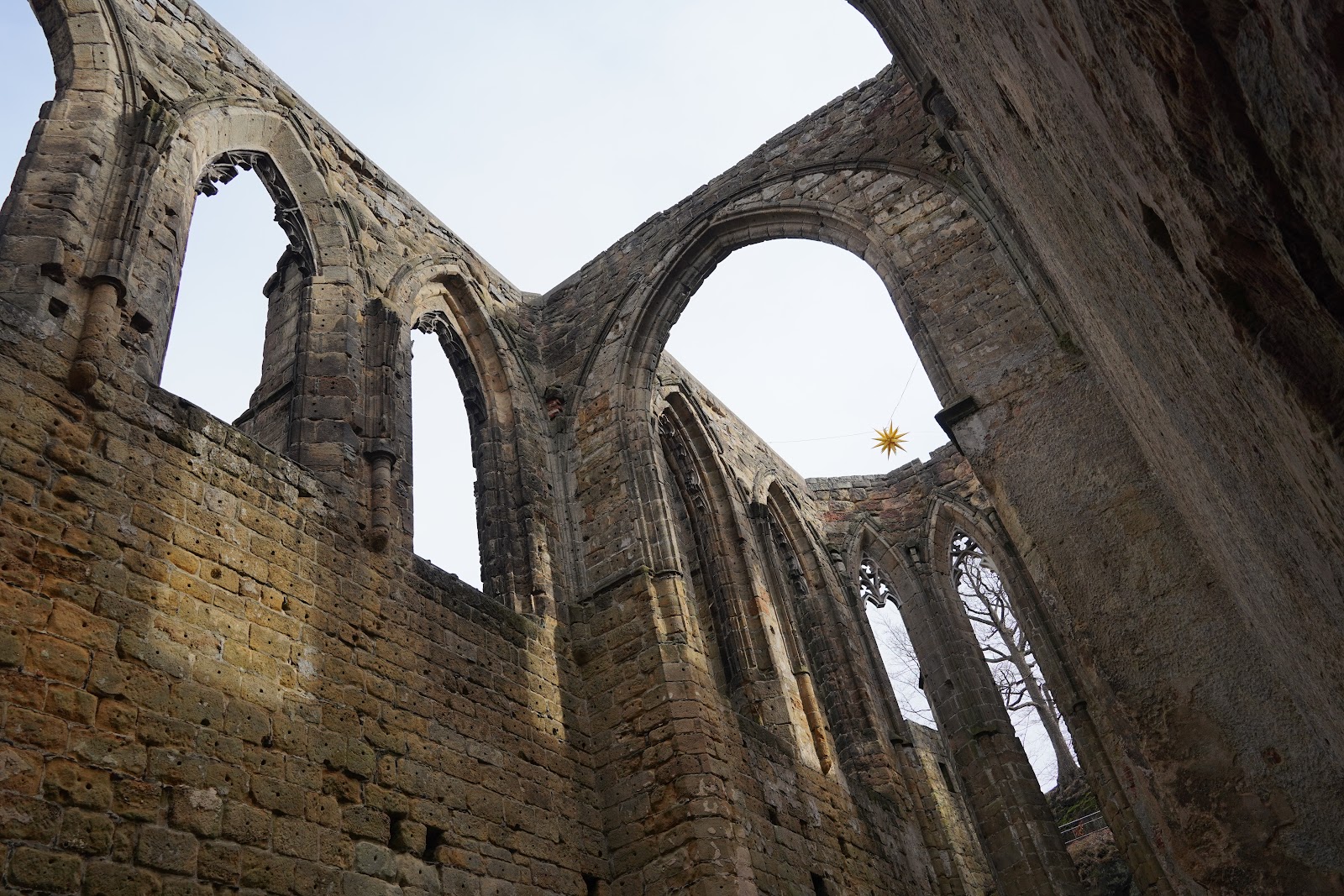


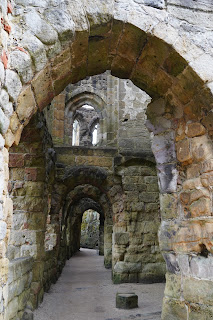

















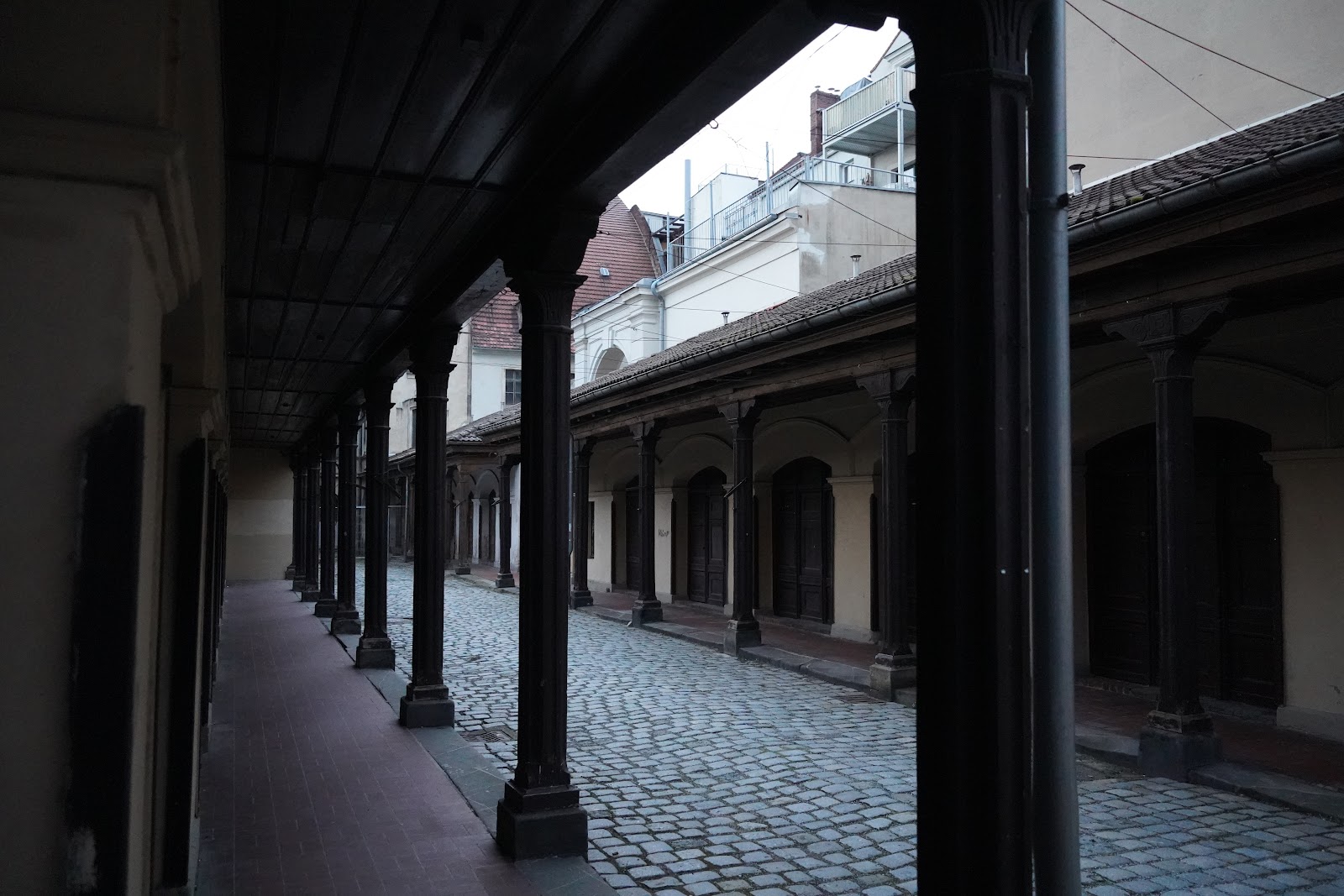




















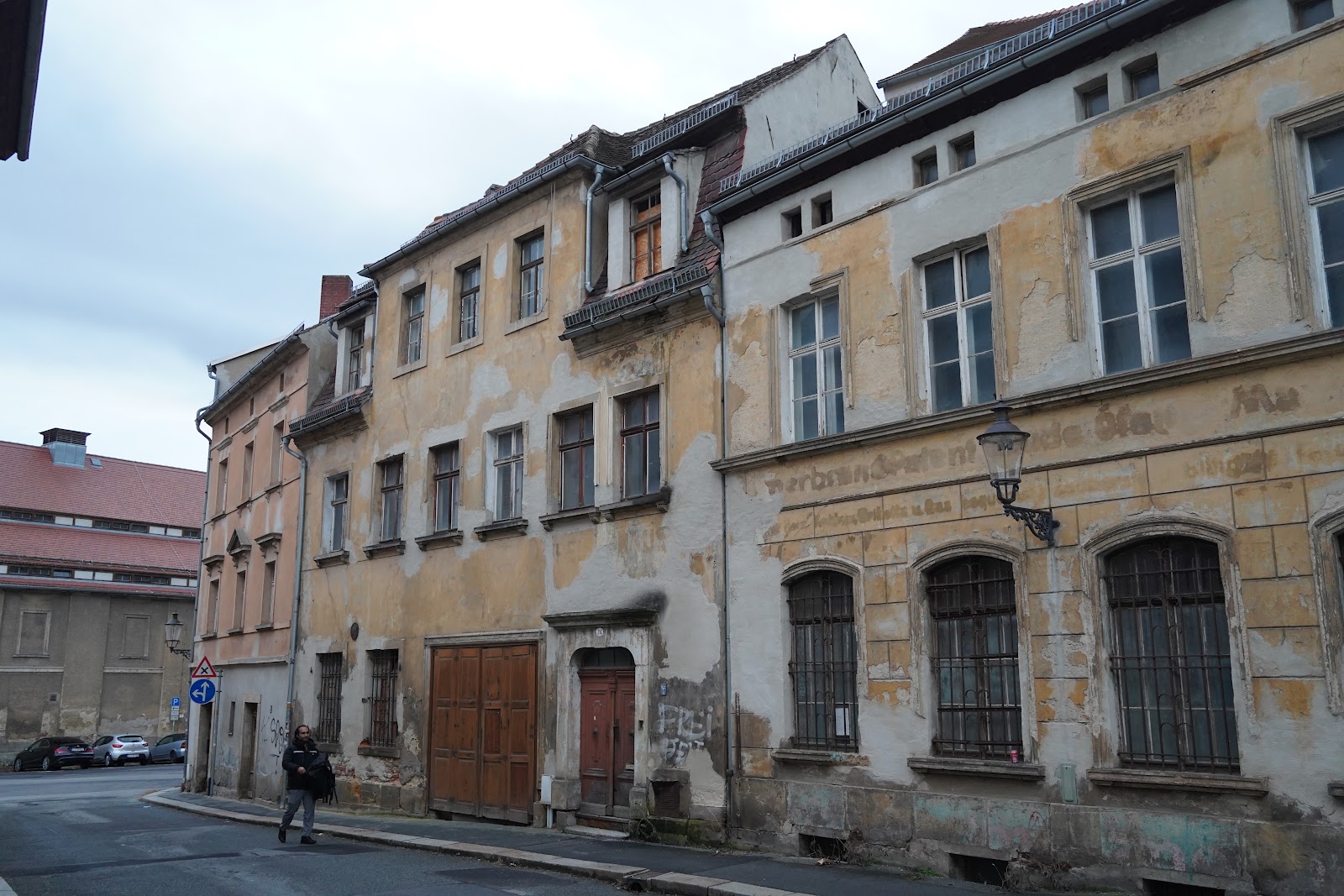
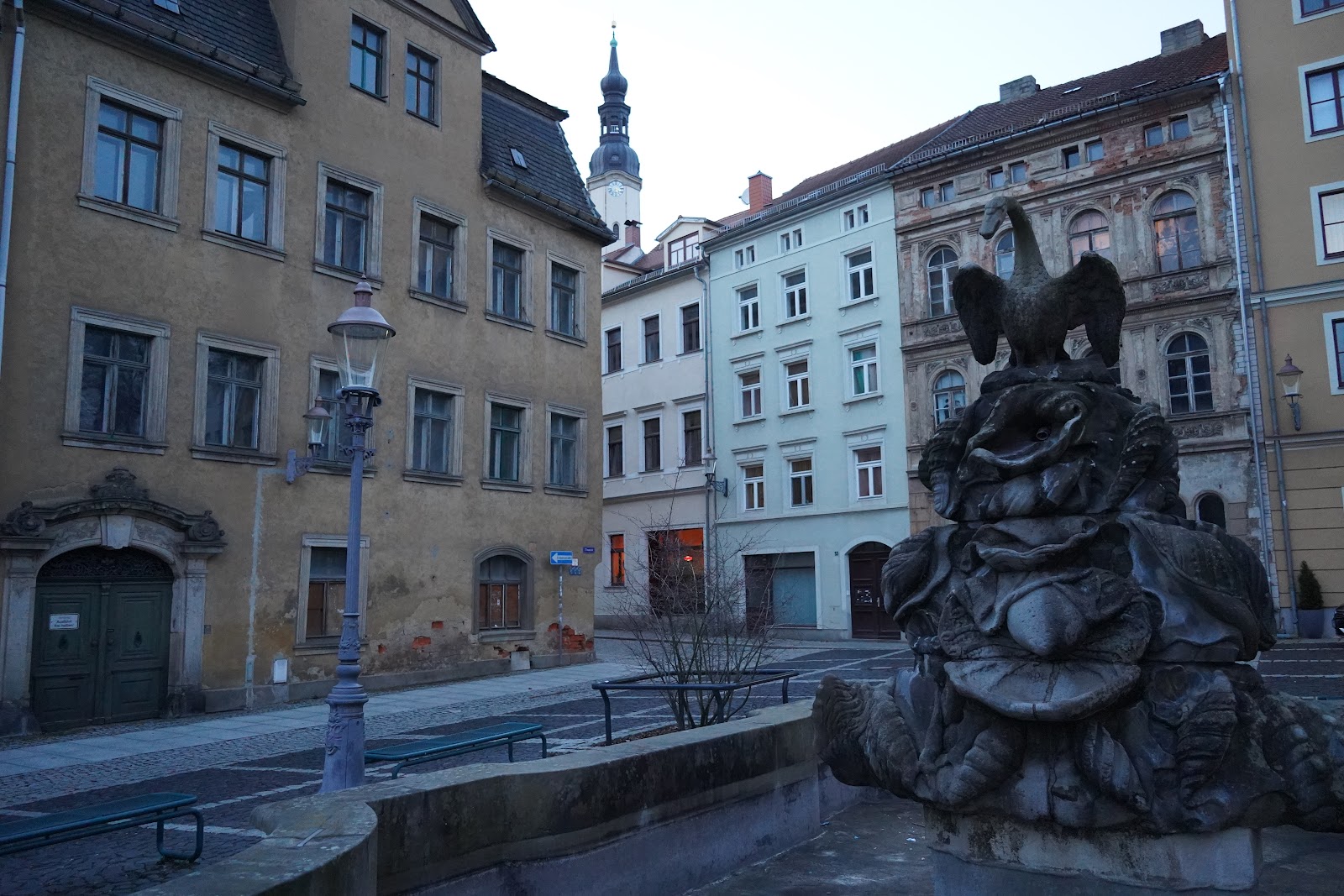






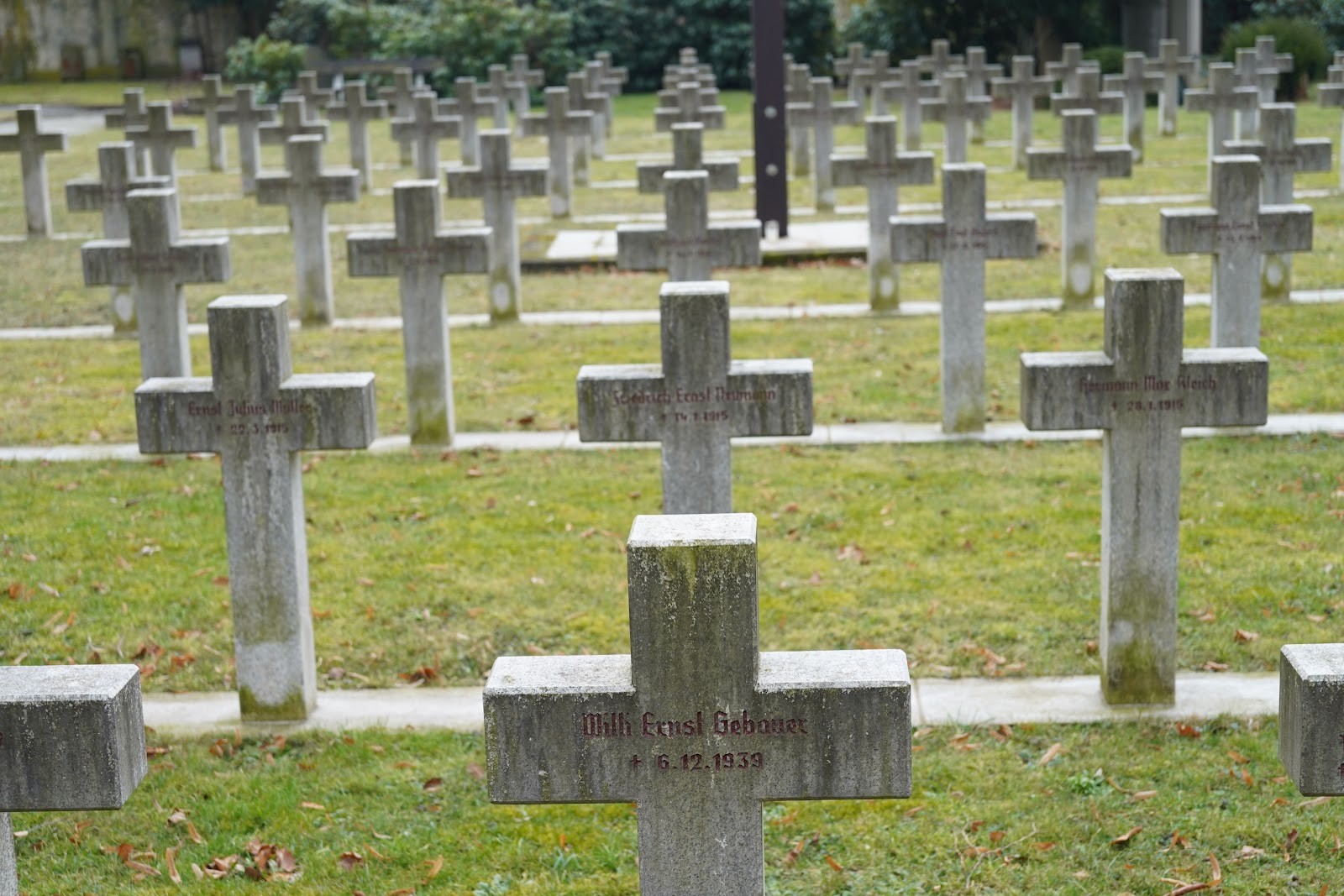








No comments:
Post a Comment